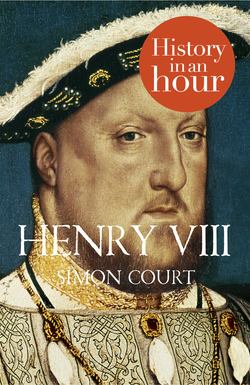Читать книгу Henry VIII: History in an Hour - Simon Court - Страница 9
The ‘King’s Great Matter’
ОглавлениеDuring Henry’s campaign in France in 1513 the Scots took the opportunity to rampage south of the border. Catherine had been left in control during her husband’s absence and oversaw an army which defeated the Scots at Flodden. King James IV of Scotland was killed in the battle, and Catherine was able to send Henry his bloodstained hauberk as a trophy. But the marriage was already in difficulties, mostly as a result of Henry’s mounting anxiety for a male heir. Catherine lost a child who only lived for a few hours in 1514, and although she gave birth to a healthy daughter, Mary, in 1516, she was always conscious that she was expected to produce a boy. She was now 30 years old, approaching middle age by contemporary standards, and as her beauty faded, Henry’s eye started to stray.
Portrait of older Catherine by an unknown artist, c.1525
It was probably during Catherine’s pregnancy with Mary that Henry took his first mistress, the 16-year-old Elizabeth Blount. The affair lasted three years, and Catherine was wise enough to conceal her feelings about it in public. Catherine’s Catholic faith supported her in 1518 through another (and final) delivery of a child who did not live long, and the birth of Henry’s illegitimate son in 1519, whom the king publicly acknowledged by naming him Henry Fitzroy (meaning ‘son of the king’).
Henry took the birth of Henry Fitzroy as proof that the problem of securing a male heir was all Catherine’s fault, and she became increasingly desperate. While she remained popular with the people and still performed her queenly duties (in 1520 she accompanied Henry to the Field of Cloth of Gold and entertained King Francis I to dinner), her personal relationship with Henry was failing. When she was 35 years old, even though Henry had ended his affair with Elizabeth Blount soon after the birth of their son, he quickly replaced her with another mistress, Mary Boleyn, who was Catherine’s lady-in-waiting. Thereafter Henry and Catherine drifted even further apart.
Securing the male succession to the Crown consumed Henry’s thoughts, had ruined his first marriage, and would eventually lead to the dramatic break with Rome and the Roman Catholic faith and the establishment of the Church of England. Yet the course which Henry eventually took was not inevitable at the beginning, for Henry was brought up as a devout Catholic. In 1521 he had defended papal supremacy by publishing Defence of the Seven Sacraments (Assertio), which had earned him the cherished title of ‘Defender of the Faith’ from Pope Leo X. Yet by 1527, with Catherine no longer capable of producing a son, he had formed the conviction that his marriage to her was unlawful in the sight of God. He grounded this belief on a passage in the Old Testament (Leviticus 20:21), which prohibited a man taking his brother’s wife. Henry interpreted the original Hebrew text to mean that such a marriage would be ‘without sons’, and convinced himself that Catherine’s prior marriage to his brother Arthur explained why they had no living male heir. So in the summer of 1527 he sent his secretary, William Knight, to Rome to argue that his marriage be annulled, but Knight’s mission was completely unsuccessful.
Was Henry’s ‘scruple of conscience’ about his marriage to Catherine genuine, or was it merely an excuse to allow him to annul the marriage and take another wife? We may strongly suspect the latter but cannot know with certainty. What is certain is that by 1527 he had fallen in love with Anne Boleyn, sister of his former mistress Mary, and his thoughts were turning towards a second marriage with Anne as a way of resolving the question of male succession. Anne likewise realized that the stakes were now so high (for Catherine would never give Henry the legitimate son he needed) that she could resist becoming merely Henry’s mistress, and hold out to become the future queen.
In 1529, Henry’s Lord Chancellor and chief adviser, Cardinal Wolsey, made further efforts to secure the divorce from Catherine, and was successful in obtaining the Pope’s consent to convene an ecclesiastical court in England, to decide the ‘Great Matter’ once and for all.
But despite protracted proceedings the case was adjourned. It is likely that Pope Clement VII never intended to allow a decision to be reached because he was at the time a hostage of Charles V, who was a loyal nephew to Catherine. Wolsey, who had staked everything on achieving an annulment for his king, was politically ruined, and unceremoniously removed from both his office and his magnificent residence at Hampton Court, which Henry appropriated. Wolsey died in 1530, a broken man.
So Catherine was still queen, and appearing as such for formal events, but Anne Boleyn was Henry’s constant companion and her family was gaining increasing political influence at court. This stalemate continued until July 1531, when Catherine refused yet again to accept the annulment, and Henry dismissed her from court. With Cardinal Wolsey dead, Henry became increasingly convinced by the arguments of Protestant advisers like Thomas Cromwell and Thomas Cranmer, and began to believe that the Pope had no right to interfere in England’s affairs at all. He took Anne with him to Calais in 1532 to try to obtain the support of King Francis (who managed to avoid meeting her), and it appears that it was on the trip home that Henry and Anne first slept together.
